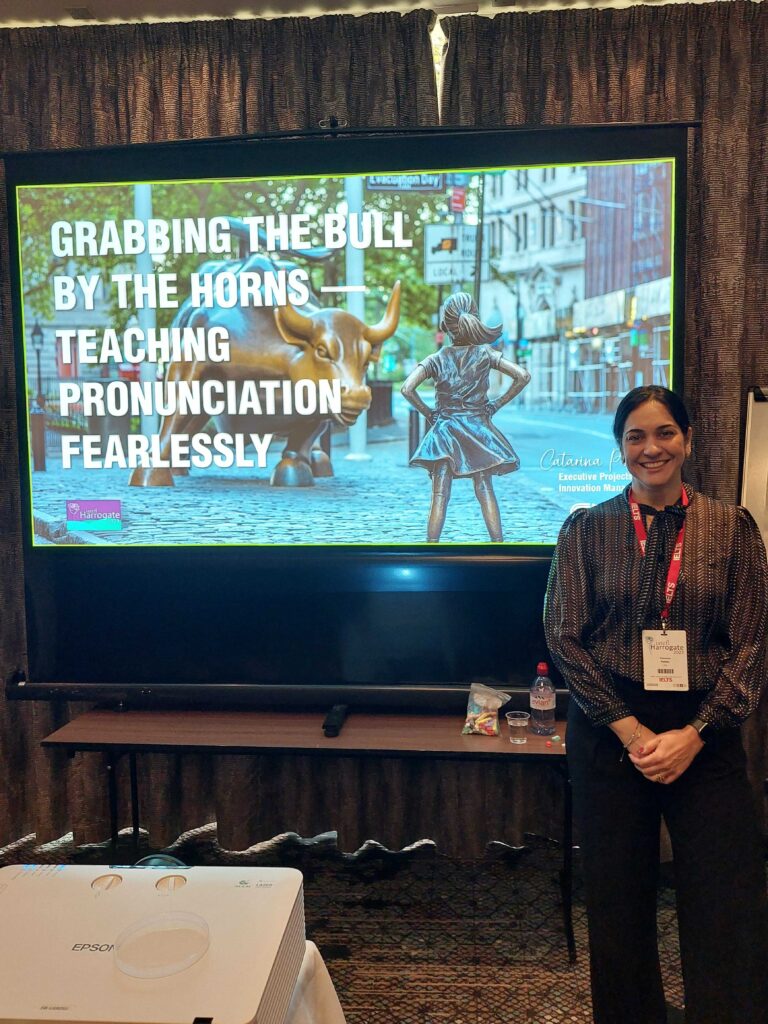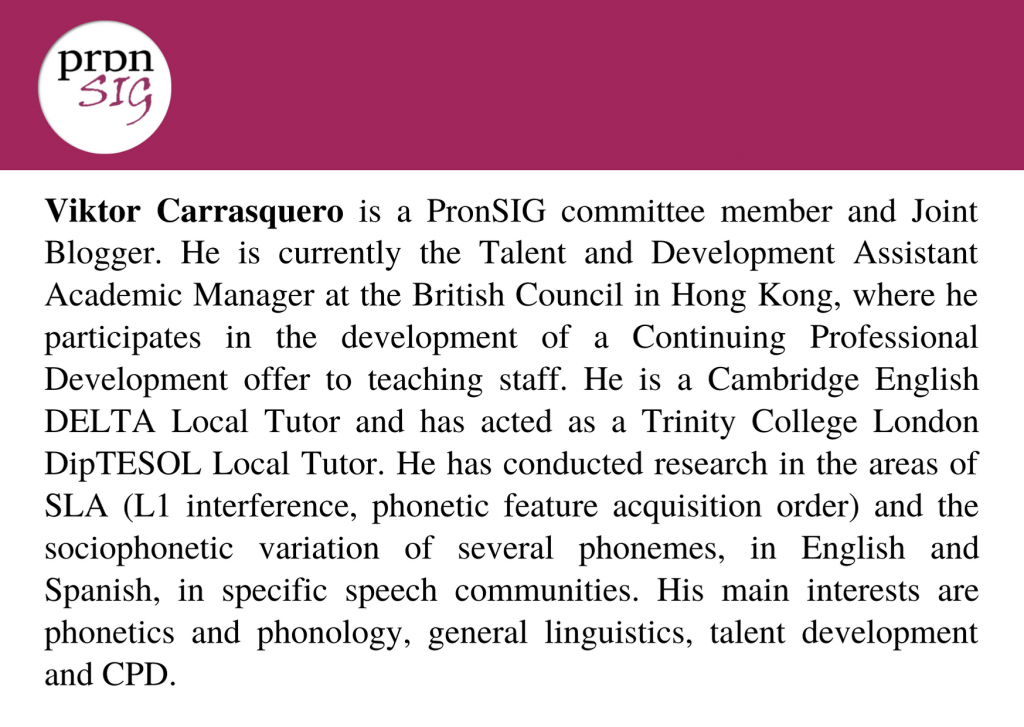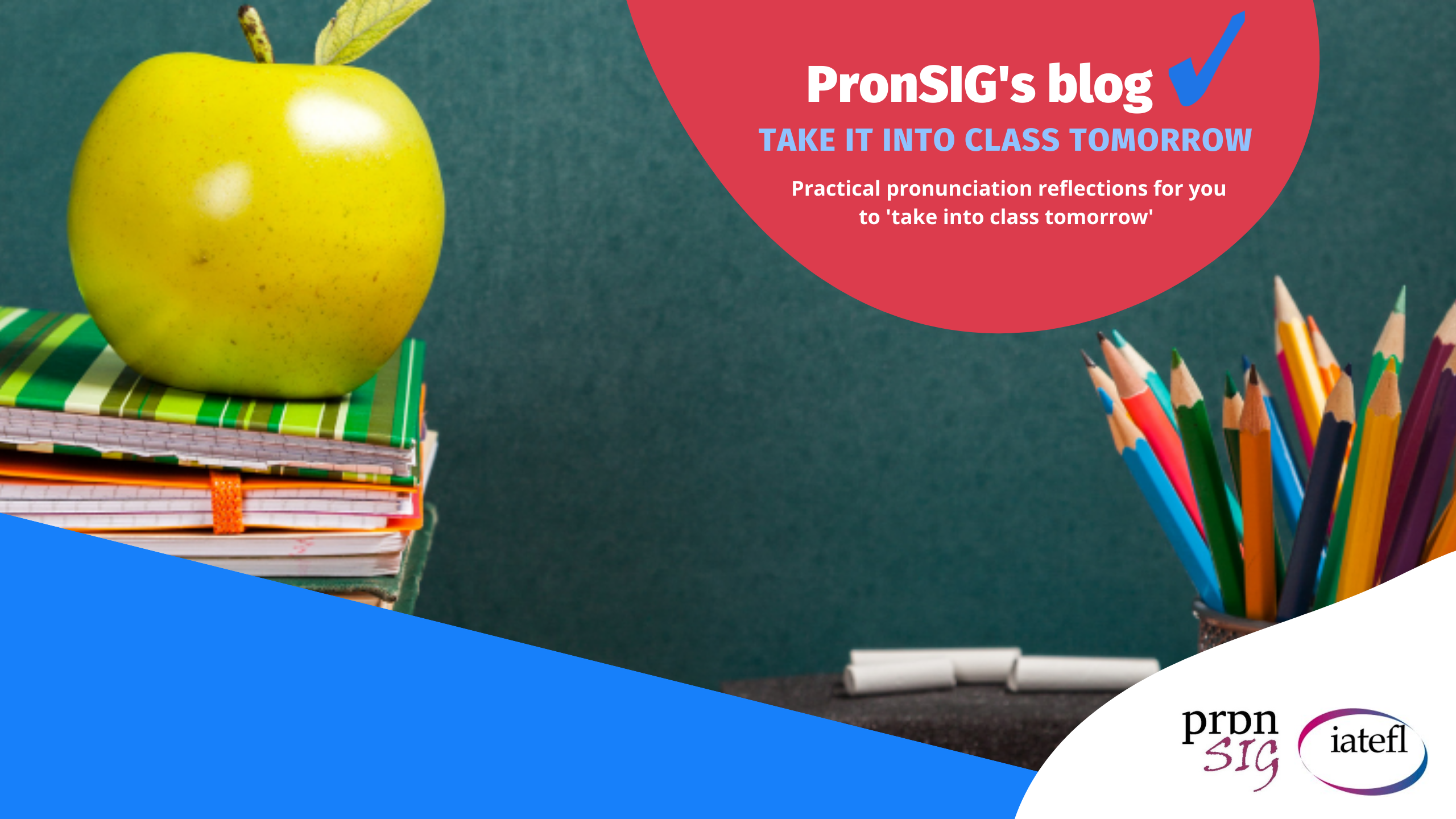by Viktor Carrasquero
Teacher development and pronunciation: Feel the fear and teach it anyway!, our second hybrid PCE on 17 April 2023, was a joint effort between the Teacher Development SIG and our Pronunciation SIG. An unqualified success, this year’s event brought the global community of Pronthusiasts together, with attendees both at Harrogate and all over the world actively engaging in four highly interactive sessions, which tackled the issues and intricacies of embedding pronunciation teaching training into our professional development. From different angles, each workshop took on anxieties, biases, limitations and assumptions teachers deal with when faced with the idea of analysing and practising pronunciation aspects in their lessons.
Here in our blog, we will discuss our impressions, as well as some lessons and quotes we got from our speakers in two parts: in this May post, we will focus on Catarina Pontes and Mark Hancock’s sessions, and in our next June post, we will focus on Michael Burri and Isabela Fritz’s sessions.
Venturing into the unfamiliar is the first step
In Grabbing the bull by the horns: Teaching Pronunciation Fearlessly, Catarina Pontes’ exploration of her personal journey from a budding pronunciation enthusiast to the expert she is at present, gave us access to how a leading figure in our field has gradually built her knowledge and her technical repertoire to become a better pronunciation teacher. We encourage this approach which, precisely because of its candor and openness, gives us all examples and a clear path we can follow. Rightly so, Pontes pointed out that most initial teacher training courses have a dire lack of a practical pronunciation teaching component, with some qualifications not including pronunciation at all!

A central lesson in Pontes’ journey has been placing great attention on learning who our students are, what they need linguistically and socially, and whether their first languages pose specific challenges to the learning of English. She talked about differences between monolingual and multilingual classes, arguing that sharing your learners’ first language is a powerful tool in understanding difficulties they face with certain pronunciation aspects, but that even if you don’t speak your learners’ L1, you can take the time and find ways to get such an understanding. Pontes agreed with ideas given by members of the audience (yes, the session was that interactive): ask your learners about pronunciation areas they find difficult, give them a diagnostic test, where you can potentially listen for the different levels of pronunciation, prioritise the typical problems they experience, focusing on the ones that most learners struggle with, the ones that truly hinder communication.
To close her session Pontes reminded us that “accent is identity”, and that instead of attempting to erase this ‘marker of self’ in learners’ speech, pronunciation instruction should focus on adding elements that ensure mutual, international intelligibility. She also recommended specific resources and materials we can experiment with in class. Here are some examples: the Hancock McDonald English Language Teaching website, which has lots of ideas, articles, materials and resources shared by Mark Hancock and Annie McDonald; YouGlish, a website that allows you to search for authentic realisations of a specific word or string of words, as people have said it in real contexts; Pontes also recommended the use of Cuisenaire rods to teach syllable number and, subsequently, word stress and connected speech.

Checking our biases
In Don’t be (afraid of) the accent police, the celebrated author and teacher trainer Mark Hancock, one of the preeminent communicators of our community of Pronthusiasts, embarked on a quest to reassure us all, teachers of English, that our pronunciation, our accent, the models we provide our learners ourselves, are good, valid and necessary. He started his workshop commenting on the ambiguity of the session title, reminding us that while some teachers have been traditionally looked down on, and possibly even disparaged because of the way they speak and the ways in which their local, regional, and individual identities permeate their accent, some others have profited from being on the other end, policing what is generally perceived as good, well-educated, and elegant. Hancock remarked that Received Pronunciation (RP) is not “intrinsically more intelligible” than other variants, warning against many people’s assumption that the symbols of the IPA represent those of RP.

On this specific issue, Hancock explained -as has been his gospel throughout his career- that the phonemic symbols of the IPA chart “represent a category of sounds”, and that, in this sense, they empower us by representing the way you and other speakers pronounce sounds. This is an important, liberating notion, as the IPA chart sounds were never meant to be imposed as the sole exemplar of appropriate pronunciation, but rather as a tool to ‘measure’ reality, a system that can account for the vast pronunciation diversity of language.
To close his session, Hancock stressed the idea that “students need a wide tolerance to different accents”, and that they should be empowered to “speak local and hear global”, which is one of the many points in which he coincides with Catarina Pontes, and us, at PronSIG: pronunciation instruction gives learners practical tools to better understand others in the global English-speaking community, as they add aspects to their speech which make them increasingly intelligible to others in said community, keeping their local, regional, and other social and individual markers of identity proudly evident.

For more tips, ideas and discussions on Pronunciation Teaching, check out PronSIG’s blog. Also, visit our website for more information on our events, and follow PronSIG on social media. Don’t forget to leave your comments below, and stay tuned for the second part of our PCE highlights in June.



I would like to attend all your webinars.
I am a member of IATEFL
Great! Make sure you follow us online (Instagram, Facebook, Twitter, LinkedIn) and register for the upcoming webinars! 🙂